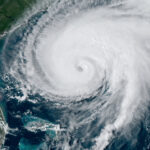Picture this: a torrent of rain swallows your street. You dial FEMA, only to hear, “We’re backlogged.” By the time inspectors arrive, your floors are warped, mold is blooming, and your claim is snarled in red tape. In 2025 alone, FEMA lost nearly $300 million in flood‑mitigation funding—just as “once‑in‑a‑century” floods are striking every 8–10 years.
Waiting for rescue is no longer a strategy. Proactive flood protection is.
Why FEMA Can’t Save Your Home Anymore
Shrinking Budgets
FEMA’s Disaster Relief Fund had just $534 million left for the entire country as of February 2025. When the next major storm hits, those dollars will disappear fast.
Delayed Aid & Red Tape
In Hurricane Helene’s aftermath, many survivors waited five months for meaningful assistance. During that limbo, floors rot and debt climbs.
Insurance Gaps
Average water‑damage claims top $14,000, yet NFIP payouts average $12,500—and many private insurers no longer write new flood policies in high‑risk zones.
The Bottom Line
Relying on federal aid is like asking an understaffed lifeguard to find you after you’ve already slipped beneath the waves.
The “Flood‑Proof Trifecta”
A. Tiger Dams™ Barriers
- Fast: Fill your fit with a garden hose in minutes—no sandbags, no mess.
- Modular: Link sections to guard your entryways.
- Reusable: Drain, dry, store on a pallet, and deploy again next season.
- Pro‑Grade: Trusted by the U.S. Army Corps of Engineers; now sized for homeowners.
B. Elevate What You Can’t Replace
Mount HVAC units, water heaters, and electrical panels at least 12 inches above projected flood levels. Use galvanized shelving or polymer risers for valuables.
C. Drainage That Works While You Sleep
French drains, gutter extensions, and battery‑backed sump pumps move water away from your foundation—even during power outages.
Why Home Flood Barriers Will Soon Be Essential
- More Floods, More Often
Climate‑charged storms now deliver a month’s rain in a single day. High‑tide events along U.S. coastlines are 300–900 % more frequent than 50 years ago. - Smaller Safety Nets
Future federal disaster reimbursements may cover only 25 % of costs, leaving homeowners and states to shoulder the rest. - Insurance in Retreat
Premiums are skyrocketing, deductibles are widening, and some insurers are abandoning coastal and riverine markets entirely. - Resale Reality
Lenders and real‑estate agents increasingly treat documented flood‑mitigation measures—like portable barriers—as must‑have features.
Speed Wins the Day
Water can rise six inches in 90 seconds during a flash‑flood surge. Tiger Dams™ let you:
- Roll‑out, tape, fill—before evacuation orders, not after.
- Control the perimeter and entryways so your interior stays dry.
- Drain & store for the next storm, saving thousands in sandbag labor and disposal.
Action Plan: Start Today
- Measure all low‑entry points—doors, garage, patios, crawl‑space vents.
- Order Tiger Dam™ Home Kits
- Practice a 10‑minute deployment drill with the family.
- Pair with elevation blocks and a battery‑backed sump pump.
- Document your mitigation steps for potential insurance discounts.
Conclusion: Don’t Wait for a Budget That Isn’t Coming
FEMA’s purse strings are tightening, insurance is retreating, and floods keep coming faster. Tiger Dams™ give you a reusable, professional‑grade shield you can deploy in minutes—season after season.
Ready to hold the line? Visit usfloodcontrol.com to order your home barrier kit today. Protect your property—and your peace of mind—before the next storm shows up uninvited.


